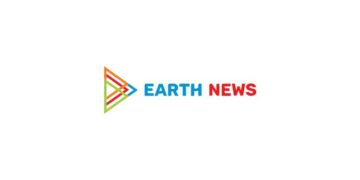In an era where technology continuously reshapes industries, the mortgage landscape stands at the forefront of transformation. Among the visionary minds navigating this uncharted territory is James Kleimann, a prominent figure in mortgage technology innovation. In this article, we delve into Kleimann’s insights and contributions, examining how his work is not only redefining processes but also enhancing accessibility within the housing market. As we explore the intersection of finance and technology, we’ll uncover the implications of these advancements for both lenders and borrowers, shedding light on a future where innovation and tradition coexist in balance. Join us as we unpack Kleimann’s perspective and the broader implications for an evolving mortgage ecosystem.
Exploring the Evolution of Mortgage Technology Under James Kleimanns Vision
The landscape of mortgage technology has undergone a remarkable transformation under James Kleimann’s stewardship. By prioritizing innovation and collaboration, Kleimann has positioned himself as a key player in addressing some of the industry’s most pressing challenges. His vision revolves around creating a seamless integration of technology to enhance not only the efficiency of mortgage processes but also the overall borrower experience.
Kleimann’s focus on cutting-edge solutions includes:
- Data-Driven Insights: Leveraging analytics to better understand borrower needs and market trends.
- Automation: Streamlining processes through robotic process automation (RPA) to reduce manual workloads and expedite loan approvals.
- User Experience Design: Prioritizing intuitive interfaces that simplify the mortgage application process for customers.
Under his leadership, companies are more inclined to adopt new technologies that promise value and scalability. For instance, the push for blockchain technology in the mortgage sector is gaining traction, offering enhanced security and transparency throughout the lending process. Below is a summary of the key technologies influencing the mortgage landscape:
| Technology | Impact |
|---|---|
| Artificial Intelligence | Facilitates better fraud detection and personalized loan offers. |
| Mobile Platforms | Enables borrowers to access mortgage information and services on-the-go. |
| Cloud Computing | Provides scalable solutions and enhances collaboration among stakeholders. |

Unveiling Key Innovations Driving Efficiency in the Mortgage Industry
The mortgage industry is undergoing a transformative phase, propelled by innovative technologies that enhance operational efficiency and customer experience. Fintech startups and established companies are collaborating to develop solutions that streamline workflows and reduce processing times. These advancements not only simplify the home-buying process but also allow lenders to focus on what’s important—building relationships with their clients. Key technologies driving these changes include:
- Automated Underwriting Systems: These systems leverage artificial intelligence and machine learning to assess loan applications quickly and accurately, reducing the burden on human underwriters.
- Blockchain Technology: By providing a secure, decentralized ledger for mortgage transactions, blockchain can enhance transparency and reduce fraud, ensuring a smoother closing process.
- Customer Relationship Management (CRM) Tools: Advanced CRM solutions enable lenders to manage customer interactions efficiently, fostering better communication and understanding of client needs.
Moreover, the integration of advanced data analytics plays a crucial role in enhancing decision-making processes. By utilizing predictive analytics, mortgage companies can gain valuable insights into borrower behavior and market trends, ultimately aiding in risk assessment and loan pricing strategies. Companies are also embracing cloud-based solutions, promoting flexibility and accessibility, which facilitates remote work and allows teams to collaborate seamlessly, regardless of location. Taken together, these innovations create a robust infrastructure that enhances productivity and nurtures a competitive edge in an evolving marketplace.
| Innovation | Benefit |
|---|---|
| Automated Underwriting | Faster application processing |
| Blockchain | Increased security and transparency |
| Data Analytics | Enhanced risk assessment |
| Cloud Solutions | Improved collaboration and flexibility |

Strategic Insights on Creating a Seamless Borrower Experience
In the evolving landscape of mortgage technology, enhancing the borrower experience hinges on several pivotal strategies. First and foremost, personalization plays a crucial role in establishing a connection with potential borrowers. By leveraging data analytics, lenders can offer tailored solutions that resonate with individual needs. This can include customized loan options, flexible repayment plans, and targeted communication based on user behavior.
Moreover, seamless integration of technology is essential for streamlining the mortgage process. Borrowers should be able to navigate every stage— from application to closing—without encountering roadblocks. This can be achieved through the adoption of user-friendly platforms that integrate essential services, such as document uploads, notifications, and real-time status updates. Lenders can further improve this experience by implementing AI-driven chatbots, which can address borrower queries efficiently and effectively.
fostering transparent communication is key to building trust and confidence among borrowers. Offering educational resources, such as webinars or comprehensive FAQs, can help demystify the mortgage process. Additionally, maintaining open lines of communication throughout the loan process allows borrowers to feel informed and empowered. Below is a simple visual representation of how these elements contribute to an enhanced borrower experience:
| Element | Benefit |
|---|---|
| Personalization | Tailored solutions increase borrower satisfaction |
| Seamless Integration | Simplified processes reduce friction |
| Transparent Communication | Builds trust and keeps borrowers informed |

Recommendations for Adopting Cutting-Edge Solutions in Mortgage Operations
In the rapidly changing landscape of mortgage operations, embracing innovative technologies is not just a luxury; it has become a necessity for organizations aiming to stay competitive. To effectively integrate cutting-edge solutions, companies should prioritize clear strategic goals that align with their overall business vision. This ensures that technology not only serves immediate needs but also supports long-term growth. Key strategies to consider include:
- Assessing current workflows: Understanding existing processes is crucial for identifying gaps and areas where technology can bring efficiency.
- Engaging stakeholders: Involving key team members in the decision-making process fosters buy-in and ensures that solutions meet actual needs.
- Staying informed: Keeping up with industry trends and emerging technologies can provide insights into what solutions may be worth considering.
Additionally, organizations should explore partnerships with technology providers who specialize in mortgage operations. This collaborative approach can enhance capabilities and bring in expertise that may not exist in-house. When choosing a vendor, consider factors such as:
| Criteria | Importance |
|---|---|
| Solution Scalability | High |
| Customer Support | Medium |
| Integration Capabilities | High |
| User-Friendliness | Medium |
adopting a culture of innovation across the organization will facilitate the successful implementation of cutting-edge solutions. Encouraging teams to experiment with new technologies and share insights can lead to breakthroughs that significantly improve operations. Workshops and continuous education play an essential role in this process, allowing employees to adapt and grow alongside technological advancements. By fostering open communication and a willingness to learn, companies can better position themselves to harness the full potential of the advancements available in the mortgage industry.

In Retrospect
In an ever-evolving landscape, where technology meets the intricacies of the mortgage industry, James Kleimann stands at the forefront of innovation. His insights illuminate the transformative power of mortgage technology, revealing how it not only streamlines processes but also enhances the consumer experience. As market demands shift and digital solutions become paramount, the discussion surrounding these innovations becomes increasingly vital. Kleimann’s contributions remind us that embracing technology is not just about keeping pace; it’s about leading the charge towards a more efficient and accessible future in housing finance. As we look ahead, one thing is clear: the intersection of technology and mortgages will continue to shape the way we buy, sell, and finance our homes. In the words of Kleimann, the journey has just begun, and the possibilities are as vast as the aspirations of those looking to secure a place to call their own.































